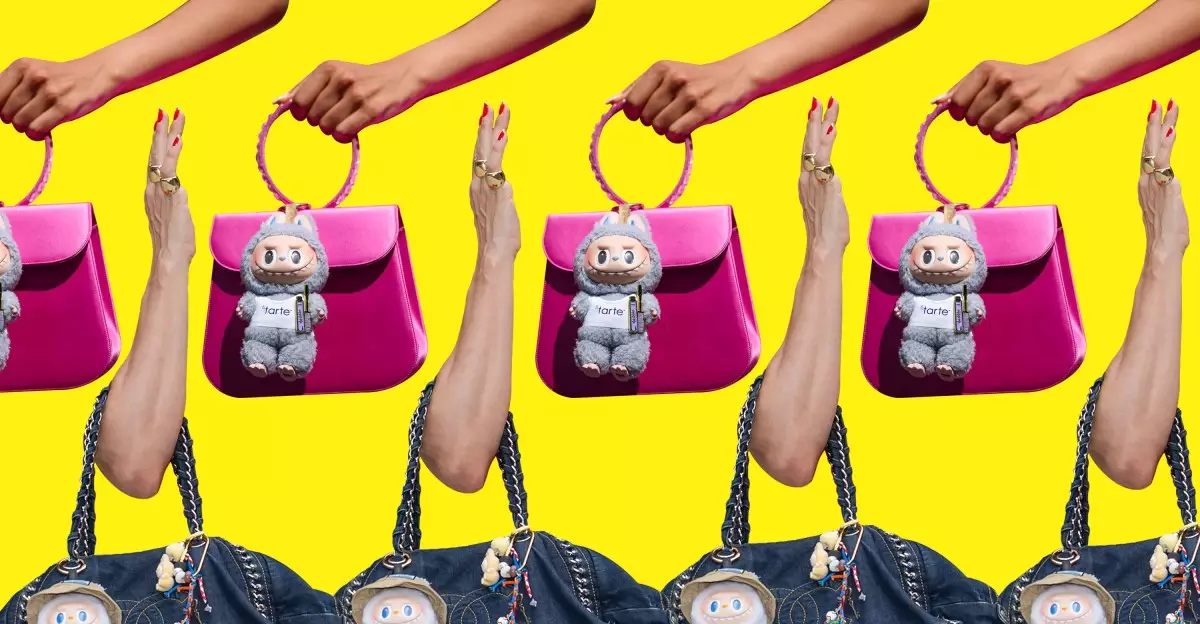For many modern collectors, the thrill of acquiring a coveted item often masks a deeper, more complex struggle. The recent frenzy surrounding Labubu figurines exemplifies this paradox perfectly. What seems like a simple purchase becomes an arduous quest, where patience, strategy, and a dash of luck intertwine. As I navigated this digital chaos—constantly refreshing streams, toggling Wi-Fi, and tapping furiously—I realized that the true challenge lies not merely in ownership but in the process leading up to it. The quest itself feels engineered to be exhausting, almost as if the act of acquiring the toy is designed to create a sense of achievement amidst chaos. This artificial scarcity and the gamification of buying transform what should be a straightforward transaction into an elaborate test of endurance and resourcefulness. It’s a reflection of contemporary consumer culture that celebrates the struggle as much as the prize, blurring the lines between genuine passion and manufactured obsession.
The Manufactured Mania: How Pop Mart Crafts a Digital Spectacle
Pop Mart’s approach to selling Labubu demonstrates a calculated mastery of hype-building. Instead of a simple online shop, they create an interactive, game-like environment that mimics high-stakes gambling rather than typical retail. Multiple display cases with limited stock, flashing timers, and “claimed” indicators generate an adrenaline rush comparable to playing a slot machine. The design of this system intentionally encourages repetitive engagement—tap, refresh, pray—much like a digital version of Black Friday chaos. Collectors and casual fans alike find themselves drawn into this spectacle, where patience is tested and frustration mounts. Influencer videos further fuel the fire, sharing tips, tricks, and hacks that turn the ritual into a skill-based contest. Yet beneath this veneer of community and strategy lies a manufactured scarcity that amplifies desirability. Pop Mart doesn’t just sell toys; it sells the experience of conquest. The game-like nature of the purchasing process transforms what should be an accessible hobby into an exclusive, almost elitist, pursuit.
The Paradox of Collectibility and Commodification
Once you succeed in your quest, the real fascination begins: the unboxing. However, for seasoned collectors, the value of Labubu is rooted more in the journey—the effort, the anticipation, and the near-random excitement of what’s inside—than in the figurine itself. The concept resembles gambling, where the thrill resides in the unpredictability of the outcome. The rarity of specific colors or variants, such as the elusive green or orange, enhances this allure, turning each purchase into a speculative gamble. For some, the accumulation becomes a beatbox of fleeting moments, fleeting because the actual return on investment—if one even seeks profit—is often negligible. Flipping these toys surpasses the pleasure of owning if the boxes are unopened or if a rare hue appears; otherwise, it’s a battle of convenience, cost, and timing. This cycle illuminates an important truth: the collectability of Labubu hinges less on the toys themselves than on the cultural and psychological framework they reflect—an endless loop of desire driven by scarcity and effort.
The Cultural Significance and Future Implications of Labubu Craze
The ongoing obsession with Labubu reveals much about our society’s relationship with digital culture and consumerism. The skyrocketing search volumes and viral TikTok videos attest to the collective fascination, while perpetuating an ecosystem of bots and scalpers that keep the frenzy alive. What emerges from this phenomenon is a portrait of modernity: demands for instant gratification, the allure of rarity, and the pursuit of social status through participation in hype cycles. Yet, as with all bubbles, there’s a flickering awareness that the value is ephemeral. The true challenge may be that, over time, the effort required to procure these collectibles will diminish as the artificial scarcity wanes, and the toys become just another toy—no longer emblematic of effort or exclusivity. Until then, the cycle persists: a constant dance of anticipation, frustration, and fleeting triumphs. At its core, Labubu serves as a mirror to contemporary consumer obsession—where the journey often matters more than the object itself, and the thrill of acquisition is as potent as the item secured.
By critically examining the Labubu craze, it becomes clear that these collectibles are more than just toys—they are symbols of our digital-age obsession with scarcity, effort, and status. The real victory isn’t in owning the figure but in surviving the ritual of pursuit.

